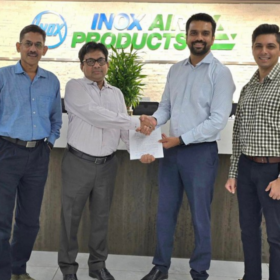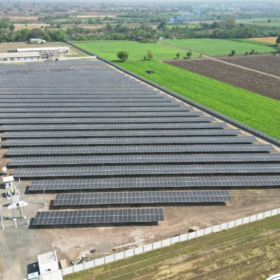In assessing all technologies offered in the market, several key aspects should be considered when approaching a supplier. For example, it’s important for developers and IPPs to understand what components are tested and how big vendors’ testing teams are, in order to ascertain how much time and resources could be devoted to this, and to gauge the scope of their testing. Additionally, it is important to know with which potential vendor third-party testing laboratories work, to verify that they are open to gaining outside validation to demonstrate reliability.
As projects last for 25-30 years, the robots need to work for the same amount of time. It is therefore important to know how a company tests for longevity and durability in harsh climates, and how they account for natural occurrences like dust, heat, and wind in artificial environments.
A good robot will clean thousands of times with minimal interference, so it is imperative to ask how robotic cleaning solution vendors test for a 25-year lifespan of a project. Developers should make sure to ask how many simulations they run, and how this is overseen. Inquire where components are designed and where they are manufactured. Developers can even ask what safety mechanisms are built into the robots.
Compatibility
The extent of the relationship that the vendors have with tracker makers, and which modules they use and test on, is another important key parameter. Developers should ask how a potential robotic provider deals with unusual field conditions such as uneven terrain that causes gaps and misalignments. This is intended to ensure that the robotic solution is flexible enough to be able to support the site, even after 10 and 25 years of ground shifting and structural movements.

It is also probable that components do not have a 25-year endurance, but it is critical to know how long they will last and when is the optimal time for them to be replaced. Finding out who is responsible for covering the cost of replacement parts, especially if it is a Capex-only model. Another important aspect to ask about is coating, and how vendors account for deterioration.
Developers should also request information about how robotic cleaning solution vendors ensure product reliability post-deployment, and what services they offer during the lifetime of the project. If they do not offer any maintenance service, investigating whether a third party can be trusted to uphold the integrity of the robotic parts is mandatory.
Monitoring
It is crucial for developers to inquire if there is any operational monitoring. Considering project sites are most likely remotely located, remote monitoring should be requested. Developers must check if there are any dashboards showing the data, to oversee the cleaning schedule and activity results.
Verifying all the above is vital for understanding how product reliability is demonstrated by a cleaning solar panel robot vendor. It will highlight whether a vendor puts safety first.
Certification, extensive testing programs, post-deployment testing and monitoring, along with other detailed questions, all validate if a PV plant owner has found a real partner in the process.
At Ecoppia, there is a 12-person-strong validation and verification department, dedicated to checking every aspect of our robots.
Ecoppia believes that every aspect of the robotic performance should be analyzed – from the impact on modules, coating, structure, to connections between neighboring structures and the testing process applies to the overall product, as well as to individual components such as batteries, wheels, firmware, and microfibers. Not only does Ecoppia have an internal team, but it also works with external laboratories for certification such as PI Berlin laboratories, one of the most reputable labs in the industry.
Ecoppia is committed to safety and ensuring a reliable solution to the solar energy market is on offer. Over the last decade, it gained vast experience developing robotic solutions for the Indian market, and as such the company consider testing part of its DNA.
This content is protected by copyright and may not be reused. If you want to cooperate with us and would like to reuse some of our content, please contact: editors@pv-magazine.com.









By submitting this form you agree to pv magazine using your data for the purposes of publishing your comment.
Your personal data will only be disclosed or otherwise transmitted to third parties for the purposes of spam filtering or if this is necessary for technical maintenance of the website. Any other transfer to third parties will not take place unless this is justified on the basis of applicable data protection regulations or if pv magazine is legally obliged to do so.
You may revoke this consent at any time with effect for the future, in which case your personal data will be deleted immediately. Otherwise, your data will be deleted if pv magazine has processed your request or the purpose of data storage is fulfilled.
Further information on data privacy can be found in our Data Protection Policy.